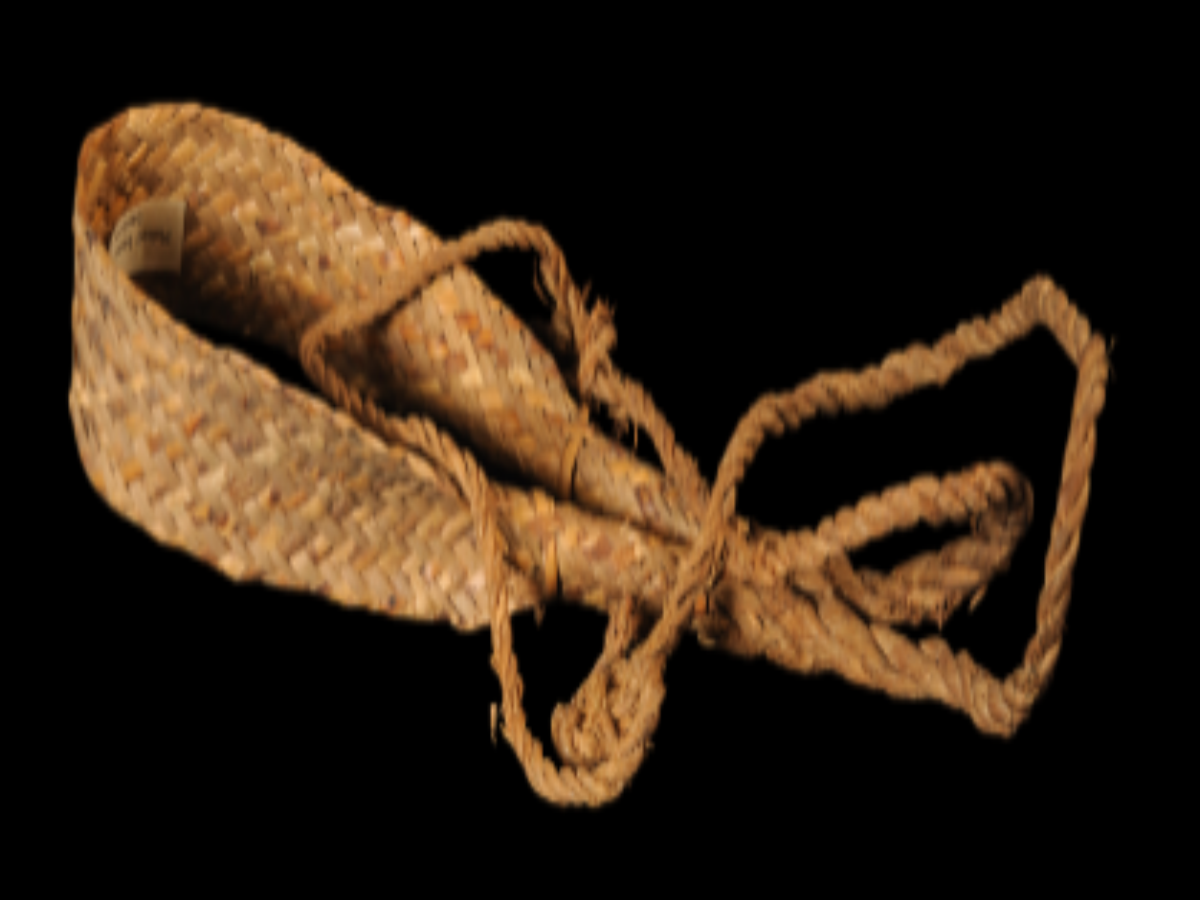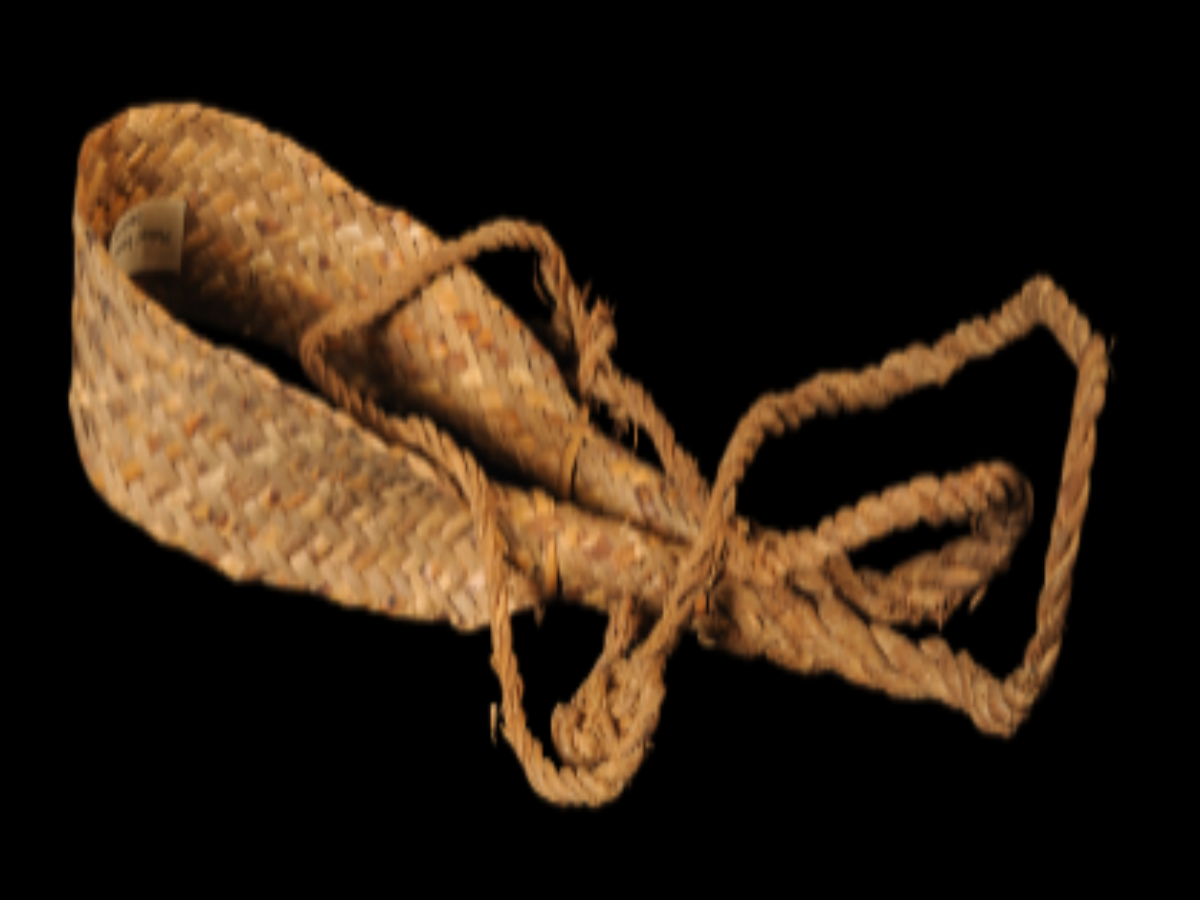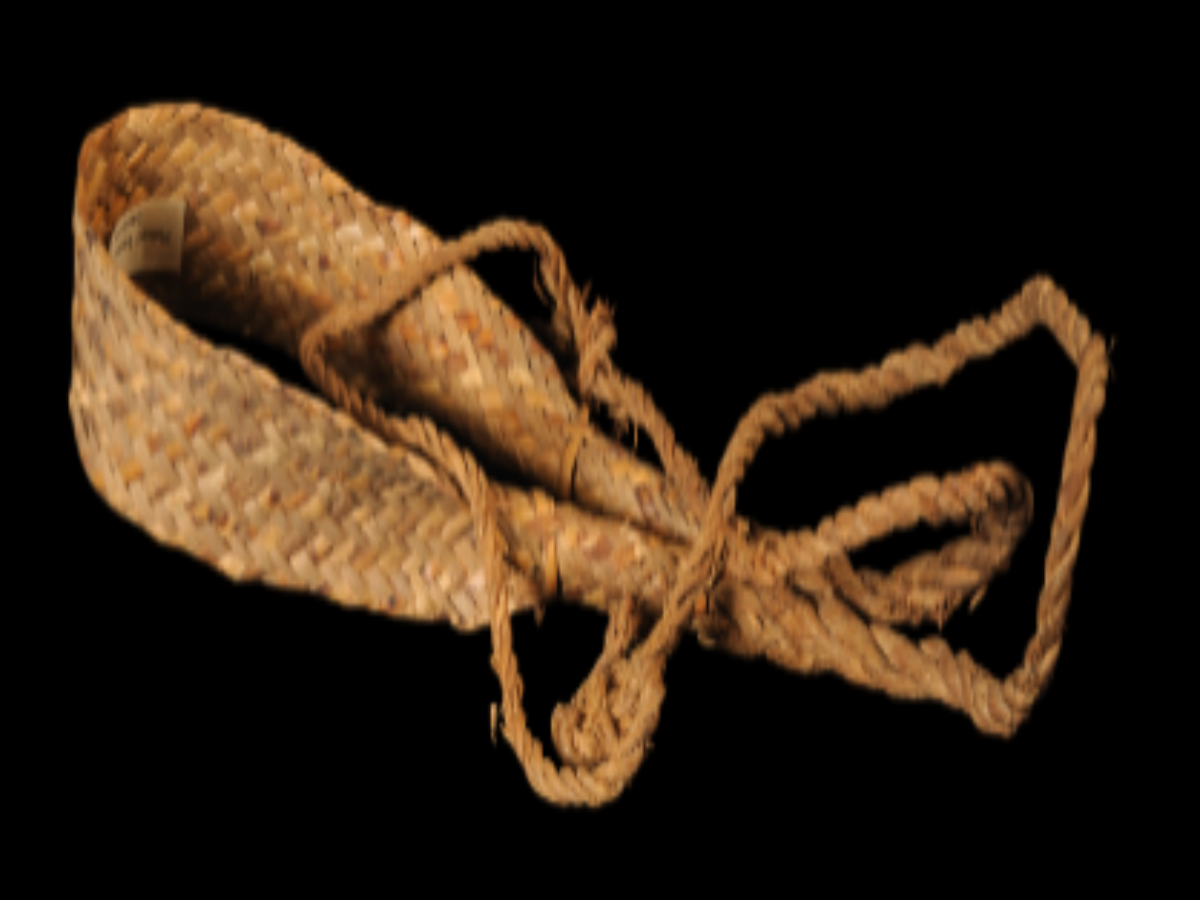State
Tribe Name
Art Type
short description
Plaited bands find their function in culture and spirituality, and they are essential artifacts for the Mizo tribe in Mizoram. Made of cane and bark, the item displays its traditional knowledge about making articles for daily life from materials freely available in nature within the environment. In Mizo society, women were active in the household and agricultural work; implements such as this plaited band are essential adjuncts to women's daily lives.The work is exceedingly strong and flexible, perfectly suited to bear heavy baskets of firewood, crops, or household supplies. Each end of the band has a short cylindrical portion, a thickened area that recalls structure and comfort against the back or shoulders. These ends fasten to twisted bark ropes that serve as supportive straps to keep the band with the basket.
Thumbnail

Filter Postion
Left
Filter Background
Off
Theme
Filter Header Image

content
Image

description
Plaited bands find their function in culture and spirituality, and they are essential artifacts for the Mizo tribe in Mizoram. Made of cane and bark, the item displays its traditional knowledge about making articles for daily life from materials freely available in nature within the environment. In Mizo society, women were active in the household and agricultural work; implements such as this plaited band are essential adjuncts to women's daily lives.The work is exceedingly strong and flexible, perfectly suited to bear heavy baskets of firewood, crops, or household supplies. Each end of the band has a short cylindrical portion, a thickened area that recalls structure and comfort against the back or shoulders. These ends fasten to twisted bark ropes that serve as supportive straps to keep the band with the basket.
This band is primarily used by Mizo women, worn across the forehead or shoulders while the basket rests on the back—a way very apt to the hilly terrain of Mizoram. This traditional manner of transporting distributes the weight in a way that is less tiresome on the bearer, allowing for carrying over prolonged distances.And as much as the plaited band had its practical purposes, it also represented the strength, resilience, and industrious characteristics of Mizo women. It has now become a symbol for the intimate relationship between the Mizo people and their environment, and the relevance of indigenous design in daily life.
This band is primarily used by Mizo women, worn across the forehead or shoulders while the basket rests on the back—a way very apt to the hilly terrain of Mizoram. This traditional manner of transporting distributes the weight in a way that is less tiresome on the bearer, allowing for carrying over prolonged distances.And as much as the plaited band had its practical purposes, it also represented the strength, resilience, and industrious characteristics of Mizo women. It has now become a symbol for the intimate relationship between the Mizo people and their environment, and the relevance of indigenous design in daily life.
Image Mode
landscape
promoted
On
Verified
Off
